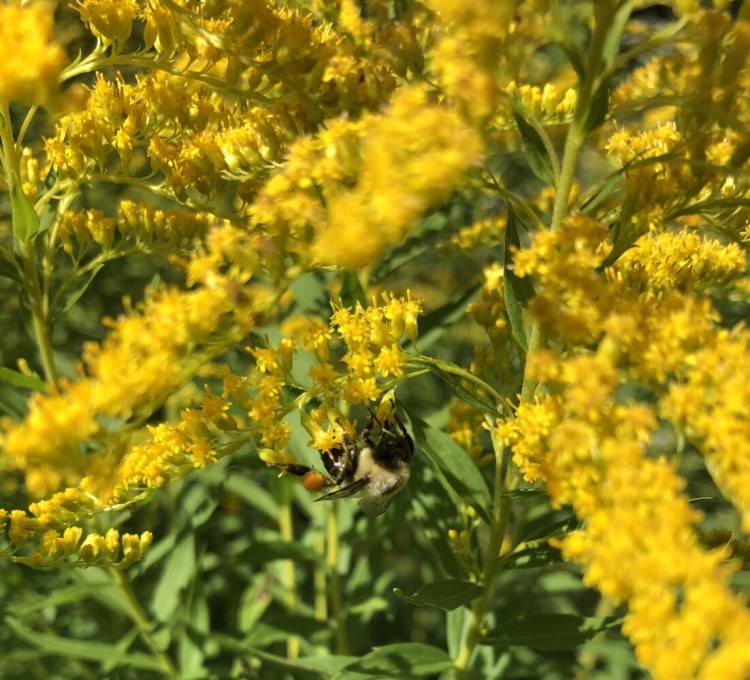Among gardeners, interest in native plants is surging. Sales are up as much as 30 percent at regular nurseries, as well as those that specialize in native plants and through groups like Maine Audubon, which sells natives each year. The soon-to-be-published “Northeast Native Plant Primer” is designed to promote that growing interest and to provide gardeners with useful information.
Its author, Uli Lorimer, who is horticulture director of the Massachusetts-based Native Plant Trust, discussed the book and the trend toward native gardening at a recent online meeting. What’s behind the trend? People are increasingly aware that pollinators are in trouble, the climate is changing and many species of wildlife are threatened, he said, and gardeners want to help. Also, as new home development increasingly pushes into what had been wildlife habitat, some homeowners seek to replace the native plants being displaced by the construction.
They should keep in mind that native plants are not all created equal. It’s important to read the labels carefully. If a plant you are considering for your garden is labeled “U.S. native,” or even native to East of the Mississippi, it may not thrive in your garden. “Our political boundaries are not really important as far as plants go,” Lorimer said.
Instead, when selecting native plants, people should consider eco-regions, he said. An Environmental Protection Agency map shows that Maine is made up of parts of three eco-regions. The Northeastern Coastal Zone extends from Casco Bay to the southern tip of New York state. The Acadian Plains and Hills includes the eastern half of the rest of the state and extends into New Brunswick and Nova Scotia. The Northern Highlands include the rest of Maine, non-coastal New Hampshire, most of Vermont and parts of Quebec. Not all Maine native plants grow in all three eco-regions.
Lorimer’s mention of these regions brought to mind Maine Audubon’s decision last summer to sell plants at its native plant sale that aren’t actually native to Maine – or, in the case of Northern blazing star (Liatris scariosa) – are native just to Maine’s southern tip. Others in this same category were lanceleaf coreopsis and scarlet bee balm. They are native just south of Maine but, as the climate warms, are definitely becoming comfortable in the state, too.
Lorimer said that biodiversity of plants — meaning a great variety of native plants — is crucial. Even more important, he said, is bio-proportionality, which he defined as having enough of the native species available to support native wildlife. To reach bio-proportionality, he said, will take a lot more than a few ecologically conscious home gardeners. All homeowners should be encouraged to reduce the size of their lawns and prioritize the ecological benefits, not merely the attractiveness of plants. Beyond individual households, he added, when solar farms intersperse native plants among the solar panels, and when municipalities, colleges, public gardens like Boston’s Arnold Arboretum and state parks like New York’s Watkins Glen switch to native plants, their actions bring the world one step nearer to bio-proportionality.
Not all native plants suit every spot, of course. Goldenrod, for example, is a highly beneficial plant, but it’s a bit of a bully, growing rapidly and grabbing space from other plants; many home gardeners consider it a weed. Lorimer suggested goldenrod mostly for fields, where it can spread without encroaching on other plants.
So next time you are in the market for new garden plants, don’t automatically reach for peonies (which originated in Asia), lavender (the Mediterranean) or some other equally beautiful foreigner that has made itself at home in our gardens. Instead, consider natives from your own eco-region. “Native plants,” Lorimer said, “have the power to heal our landscapes, welcome wildlife into our gardens – and inspire us.”
Tom Atwell is a freelance writer gardening in Cape Elizabeth. He can be contacted at: tomatwell@me.com.
Send questions/comments to the editors.




Comments are no longer available on this story